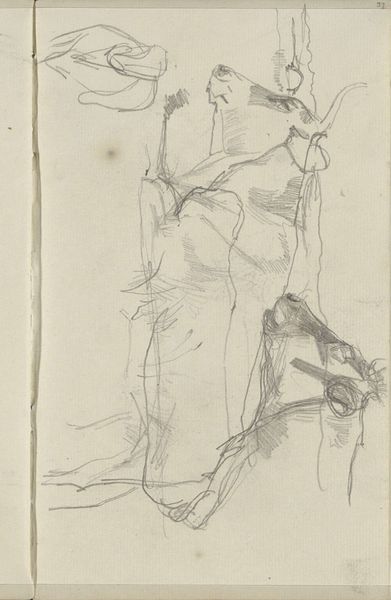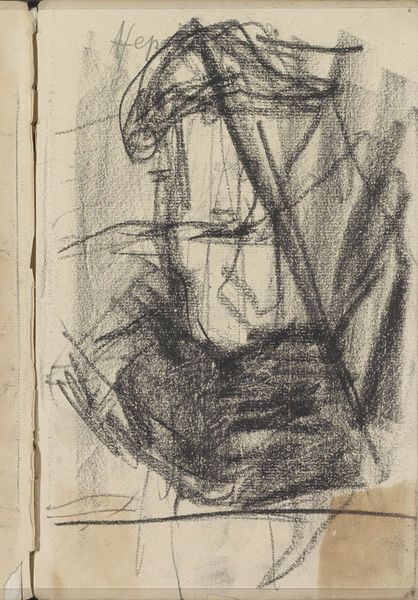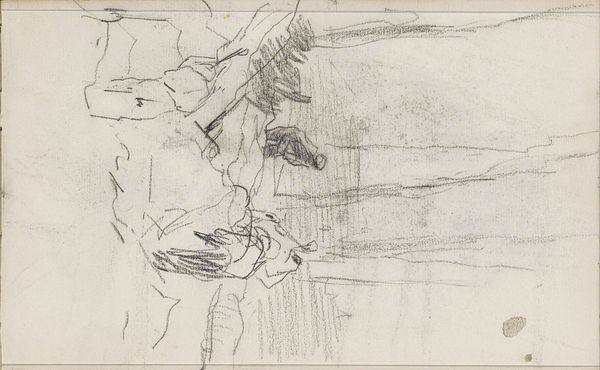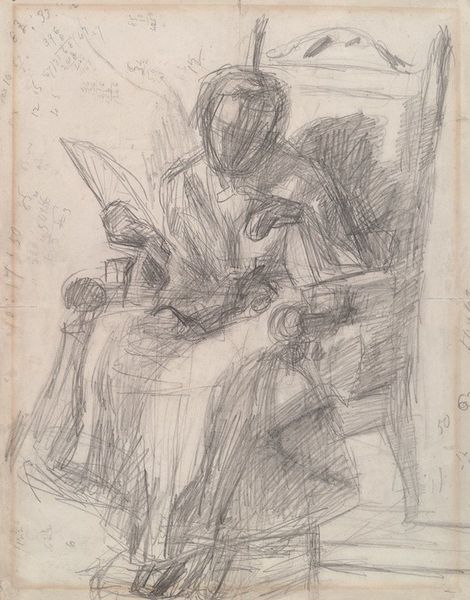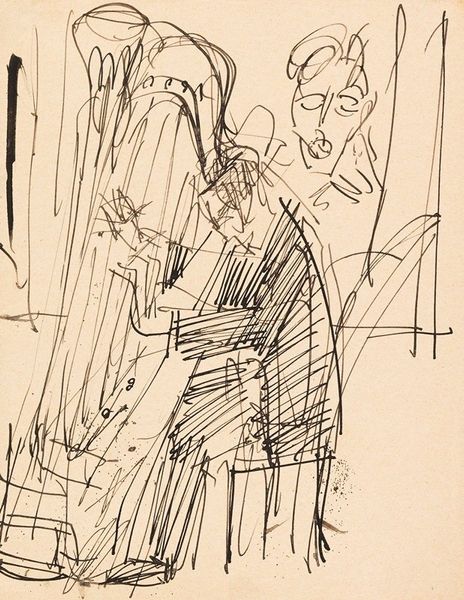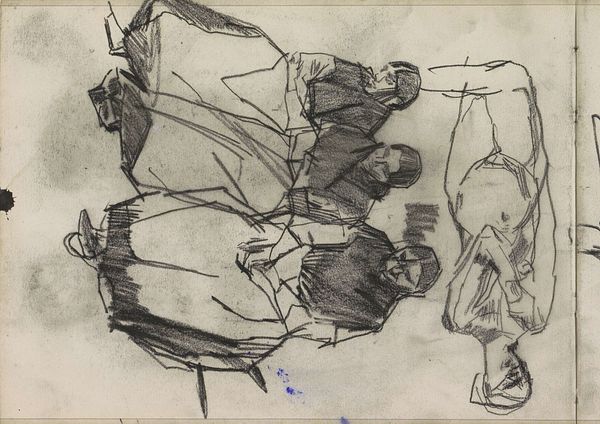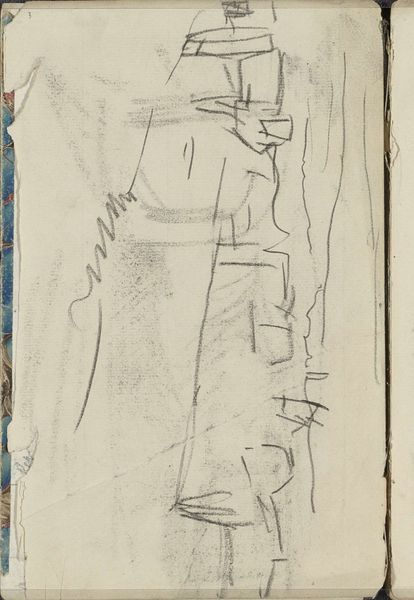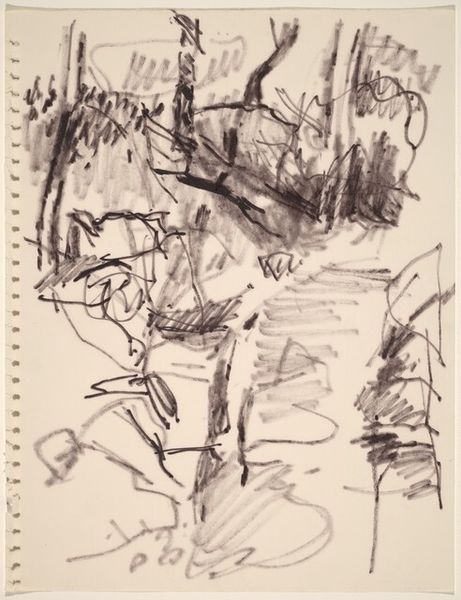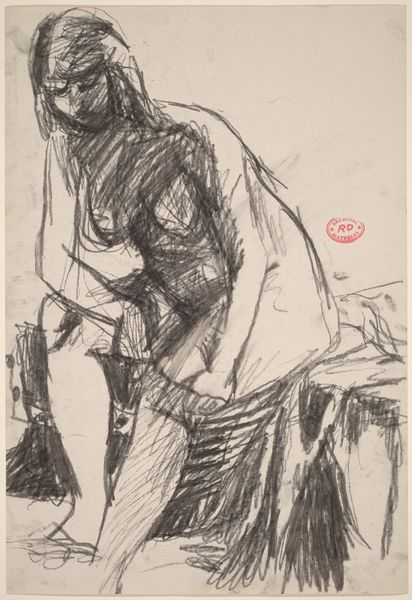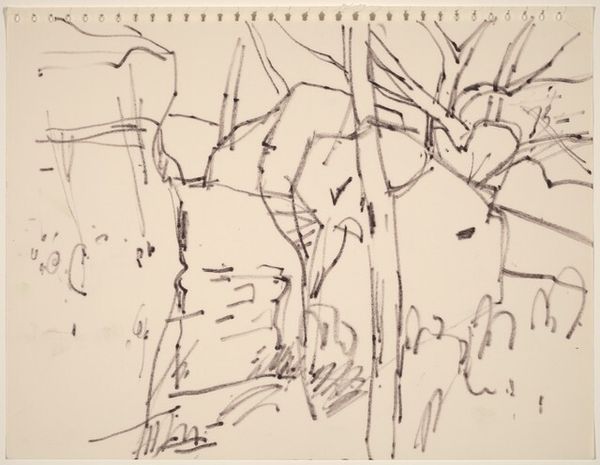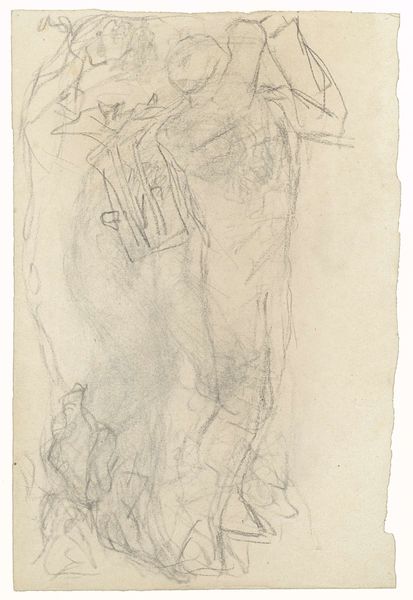
Dimensions: support: 611 x 430 mm
Copyright: © Georg Baselitz | CC-BY-NC-ND 4.0 DEED, Photo: Tate
Curator: Georg Baselitz's "Study for Woodcut" has a certain raw energy that I immediately respond to. It feels like a thought caught mid-flight, doesn't it? Editor: Absolutely, you can feel its provisional state. Look at the texture, the visible process of its making. The materials—paper, crayon—emphasize a direct, almost crude, engagement. Curator: It's disorienting at first, the lines crisscrossing. Then a figure emerges, wrestling with itself. Like something deeply personal being dragged into the light. Editor: I agree, and the woodcut process itself is laborious, demanding physical engagement. This piece reveals a fascinating tension between preparation and the final execution. Curator: It invites us to witness the artist grappling with form, trying to make sense of the internal chaos, even if we cannot. Editor: Precisely. It highlights the labour involved in art making. This study reveals the conscious effort, the crafting—the making. Curator: It really does seem as if Baselitz is inviting us into his creative process, into the raw, unfiltered moment of artistic creation. Editor: A glimpse into the artist's studio, a reminder of the sweat and labour that goes into the making of art.
Comments
tate 3 months ago
⋮
http://www.tate.org.uk/art/artworks/baselitz-study-for-woodcut-t03945
Join the conversation
Join millions of artists and users on Artera today and experience the ultimate creative platform.
tate 3 months ago
⋮
This figure shares many of the characteristics of the young men depicted in the series of Heroes which Baselitz created between 1965-6. This youth is dressed in short pants that reveal his injuries - the right leg seems to be amputated at the knee, and the left leg is footless. A detached foot is wedged into the space between the figure's legs, and an extra arm and artificial leg are in the lower left corner. In the woodcut to which this work is related, entitled 'Torso', the composition is simplified to include only the headless and footless body of a man without any additional details. Horizontal crop lines and light shading at the top and bottom of the drawing indicate the area of the composition which was transferred to the woodcut. Gallery label, September 2004

